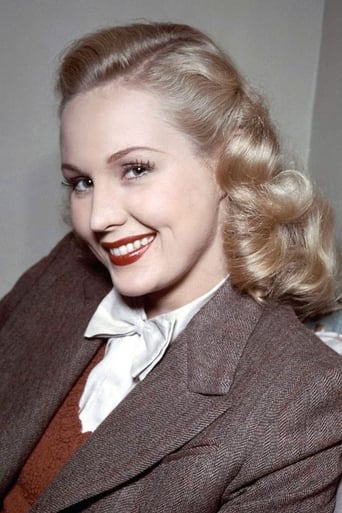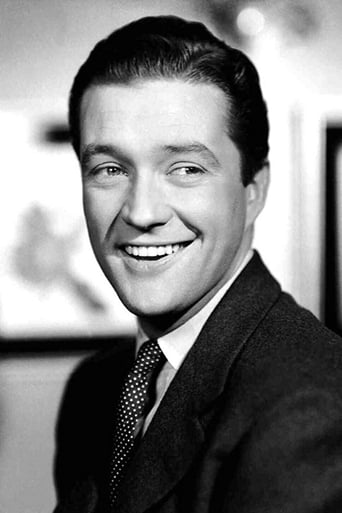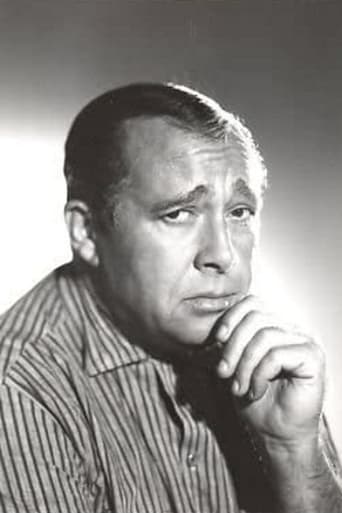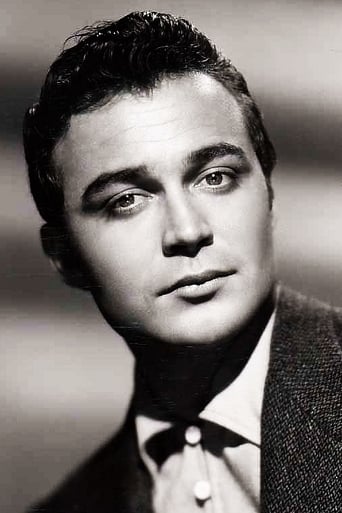bkoganbing
You can't make a bad looking movie in Hawaii and the scenic Hawaiian locations are the main thing that Pearl Of The South Pacific has going for it. Otherwise this is a rather desultory, but somewhat campy drama about two adventurers and a bad girl in the South Pacific looking to grab off a cache of black pearls on a beautiful tropical island in the South Pacific.Said island is run by Basil Ruysdael who cornered the missionary trade years ago and now he's worshiped as a white god. At his command the natives are ready to turn the white guys schooner away. But then Virginia Mayo appears on deck and she announces she's a missionary. Since the natives have never seen a blonde before they have to let them land. Soon afterward Mayo discards her 19th century garb, corsets and all, and borrows one of Dorothy Lamour's sarongs from Paramount. New kind of hip missionary. The chief Murvyn Vye's son Lance Fuller is most taken with Mayo.The only other thing is that Mayo's partners Dennis Morgan and David Farrar fall out as well.This could have been a great satire on all those South Seas adventure films if the producer Benedict Bogeaus and director Allan Dwan had recognized it. Still on that level it's enjoyable.
Leofwine_draca
PEARL OF THE SOUTH PACIFIC is your usual Pacific island adventure yarn from the mid-1950s. It was directed by stalwart Canadian Allan Dwan, who had previously made SANDS OF IWO JIMA so had some idea about making films set in that part of the world. Indeed, Dwan's brisk and efficient direction is the best thing about this otherwise undistinguished movie.The plot sees a trio of Americans masquerading as missionaries when in reality they're fortune-seekers looking for a hidden treasure of black pearls. First and foremost of these is blonde starlet Virginia Mayo, who the cameraman seems to be in love with; most of the focus is on her and her alone as she wears a succession of skimpy outfits and appears to be little more than a clothes horse at times. Mayo more than holds her own amid a largely undistinguished cast.There's a little plot and a little intrigue with the locals although hardly anything in the way of real action. The usual dodgy ethics of the era abound, particularly in the depiction of backwards islanders who are Americans browned up with liberal fake sun tan. At least the Hawaiian locations give this an authentic look. The best part of the film is the inclusion of a real giant squid that also showed up in Ed Wood's BRIDE OF THE MONSTER.
mark.waltz
It's correct to note that when actresses of a certain age get to a point in their career, they might be asked to go down Maria Montez territory to put on a sarong and/or go to an exotic location for an Indiana Jones like adventure. Yvonne De Carlo returned to these types of roles with Republic's "Flame of the Islands" and Jane Russell dove for pearls to Perez Prado music in RKO's "Underwater". Even Barbara Stanwyck did this (minus the sarong fortunately) in the same year's "Escape to Burma" which this Virginia Mayo epic seems to take place on the same set.Filmed in Super Silly Scope, this adventure yarn is another case of "Uh oh, there goes the neighborhood", occurring in the south seas when a ship containing men searching for black pearls arrives near an uncharted island where one was discovered. "Bad girl" Virginia Mayo disguises herself as a missionary in order to fool the islanders who are being ruled by Basil Ruysdael, an Englishman who doesn't want outsiders ruining the island, and who could blame him? The islanders, unlike those in such south sea movies as "The Hurricane" or anything else starring Jon Hall and Dorothy Lamour, aren't too kean on it either, greeting them with spears while Ruysdael voices threats. With her sensuous looks, it's obvious to Ruysdael that Mayo ain't no missionary, and when she makes a play for his scantily clad son (Lance Fuller), war between the islanders and white men is inevitable.While Mayo has surface beauty, there's also something cold which can't be explained by simply watching her on film. This made her perfect for film noir, hence classics like "White Heat" and "Kiss Tomorrow Goodbye", but in musicals, she can't compare to Grable or Day. She does get a bit of an opportunity to sing, introducing native children to the nursery rhyme song "Ten Little Indians", and that is the one moment where her warmth briefly comes out. But here, she's involved with three men: old lover Dennis Morgan (looking much aged from his Warner Brothers days), new lover David Farrar (quite sinister) and innocent but deadly serious Lance Fuller, and that makes her a total floozy. Then, there's the obviously rubber octopus, perhaps the same one that made infamy in the same year's "Bride of the Monster", guarding the hidden cavern which can only be found through a pond in the middle of the island that contains the hidden stash of black pearls. This brings on more unintentional laughs that might have your chest in pain.This is a reflection of the fun but schlocky films of the 1940's and 50's that kids used to rush to on Saturday afternoons that if they were to see today, they'd probably roll their eyes and declare how stupid it all seems in retrospective. Still, it's all innocent fun, as far-fetched and fantastic the plot is, a reminder of what films used to be made to do. In a sense, this could be almost a variation of a Greek tragedy, sort of an Aesop's fable, as if transfered into a screenplay and a modern era, and definitely a lesson in how greed can destroy the soul.
jjnxn-1
South Seas silliness mostly shot on obvious sets but it is colorful and mindless so if you are in an undemanding mood this will fill the bill although they really should have found a reason for Dennis Morgan to sing. Virginia Mayo was a good actress whose career was unfortunately strewn with this kind of junk, either she was at the wrong studio which didn't know how to cast her or she just took whatever came along because excepting The Best Years of Our Lives and White Heat her films are almost all forgettable. Lance Fuller provides a great deal of eye candy throughout as a South Seas islander oddly named George. The kind of picture churned out by the studios for the lower half of a double bill.




